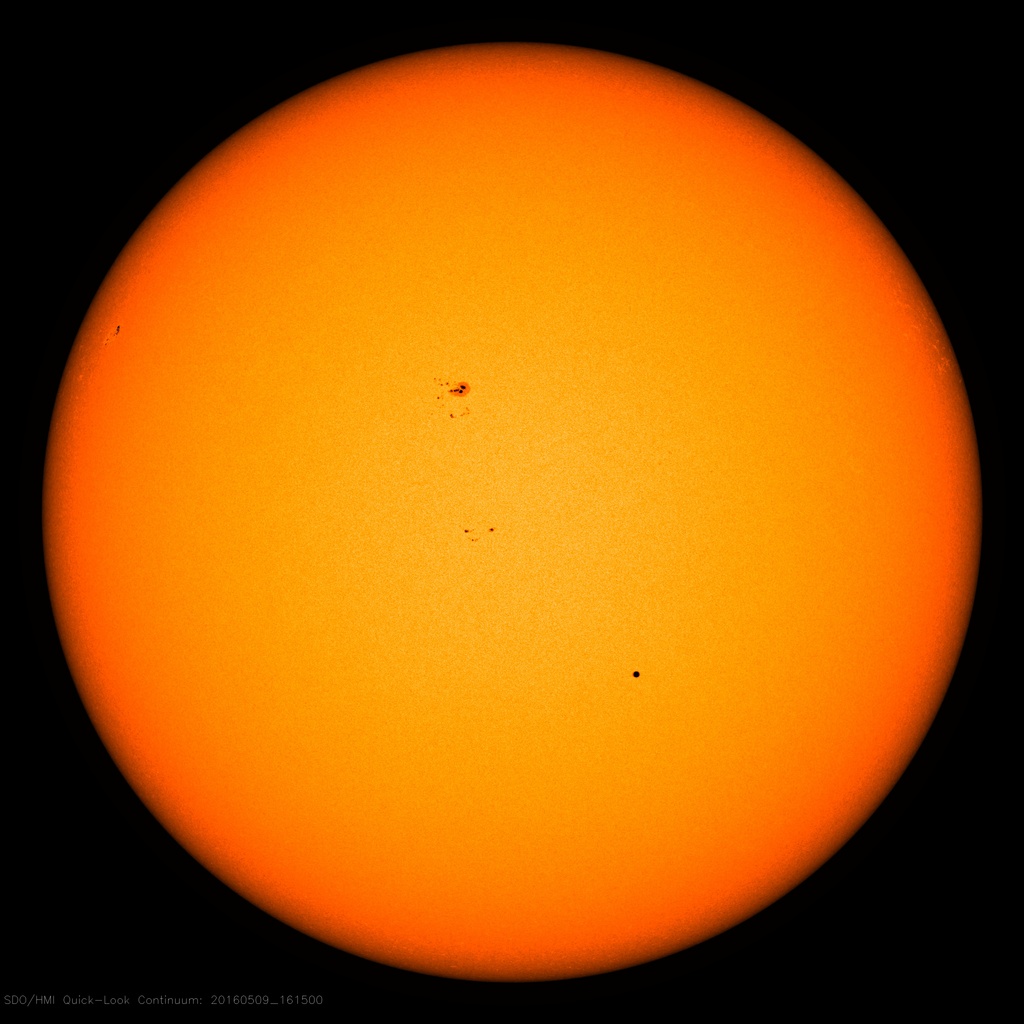Teach Your Kids About the Mercury Transit of 2019 with This NASA Guide

Mercury will fly across the sun (from Earth's perspective) on Monday, and NASA has a whole lot of kids' materials ready for the occasion.
The agency urges educators, parents and guardians not to miss the opportunity to do real-time science with kids, since the next transit won't occur until 2032.
If the weather is good outside and if you have the proper equipment, you can take the kids out to show them the transit "in person." Make sure that any binoculars or telescopes you use have proper solar filters on them, and never look at the sun with your unprotected eyes. Here's NASA's list of proper safety equipment to enjoy the experience safely.
Related: Mercury Transit 2019: Where and How to See It on Nov. 11
Here are several activities that kids can enjoy.
- Can You Spot Mercury?: This slideshow allows kids to look for the planet Mercury going across the sun in previous planetary transits (the last one was in 2016). It will be good practice for the big event on Monday. (Kindergarten to grade 12)
- 18 Ways That NASA Uses Pi: Mercury is a round planet going across a round sun, and as every math student learns, pi is an essential component in calculating a disk or a surface area. This website provides nearly 20 ways that NASA uses pi in multiple missions, even for Mars exploration. (Kindergarten to grade 12)
- Solar Sleuth: This math problem, complete with illustrations, shows how astronomers calculate the size of exoplanets when they pass along the face of their own sun, just like with Mercury. Maybe you can apply this to Monday's transit. (Grades 6 to 9)
- Sun Screen: This math problem helps students figure out how much sunlight is lost on Earth when Mercury passes across the sun. (Grades 6 to 9)
- Exploring Exoplanets with Kepler: This math session helps students use transits to understand Mercury, Venus and exoplanets. (Grades 6 to 12)
Historically, NASA explained in a statement, the transit of Mercury was used to help accurately measure the distance between the sun and Earth. (Today, we can do the same thing with more precise radar measurements, but the technology wasn't available in the 17th century.)
In this technique, observers spread around Earth look at Mercury's position on the sun and compare notes. This phenomenon is called parallax shift, and you can even see it in action by stretching out your arm, putting your thumb up, and looking at your thumb with your left eye only, then your right eye only. The position of the thumb against the background slightly shifts, because your eyes examine it from slightly different angles.
Get the Space.com Newsletter
Breaking space news, the latest updates on rocket launches, skywatching events and more!
Transits of the sun are still useful for scientists today because they can teach better techniques for measuring the size of exoplanets that pass in front of their own suns, or for looking for atmospheric properties, NASA added.
"When Mercury is in front of the sun, we can study the exosphere close to the planet," NASA scientist Rosemary Killen said in the same statement. "Sodium in the exosphere absorbs and re-emits a yellow-orange color from sunlight, and by measuring that absorption, we can learn about the density of gas there."
- How Far is Mercury From the Sun?
- See the Sharpest-Ever View of Mercury's Transit Across the Sun
- Mercury Transit of the Sun: Why Is It So Rare?
Follow Elizabeth Howell on Twitter @howellspace. Follow us on Twitter @Spacedotcom and on Facebook.

Join our Space Forums to keep talking space on the latest missions, night sky and more! And if you have a news tip, correction or comment, let us know at: community@space.com.

Elizabeth Howell (she/her), Ph.D., was a staff writer in the spaceflight channel between 2022 and 2024 specializing in Canadian space news. She was contributing writer for Space.com for 10 years from 2012 to 2024. Elizabeth's reporting includes multiple exclusives with the White House, leading world coverage about a lost-and-found space tomato on the International Space Station, witnessing five human spaceflight launches on two continents, flying parabolic, working inside a spacesuit, and participating in a simulated Mars mission. Her latest book, "Why Am I Taller?" (ECW Press, 2022) is co-written with astronaut Dave Williams.









